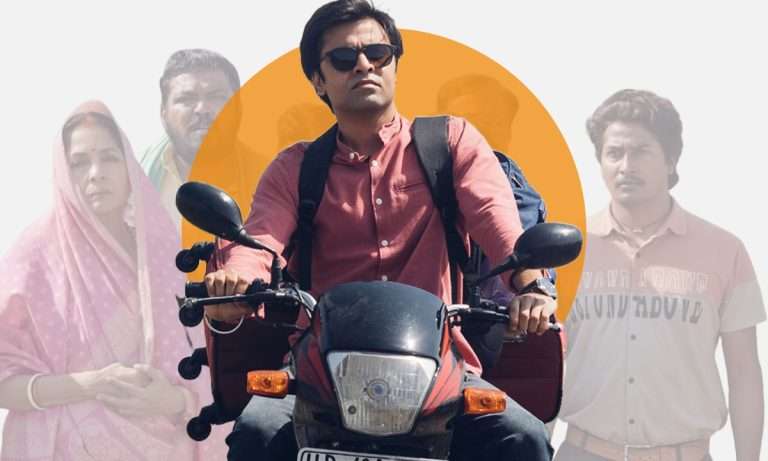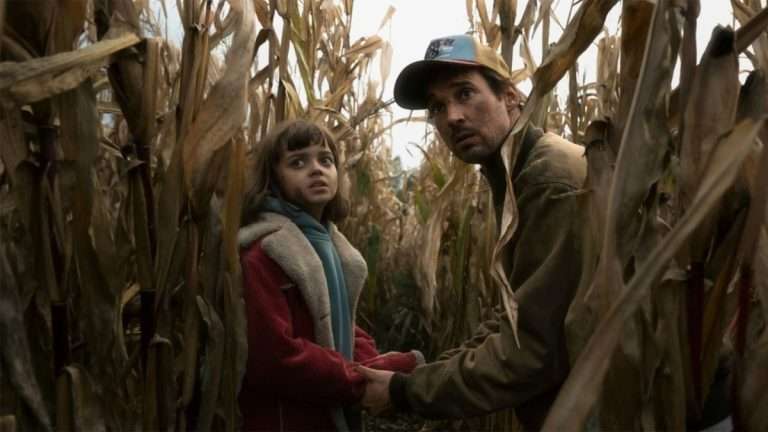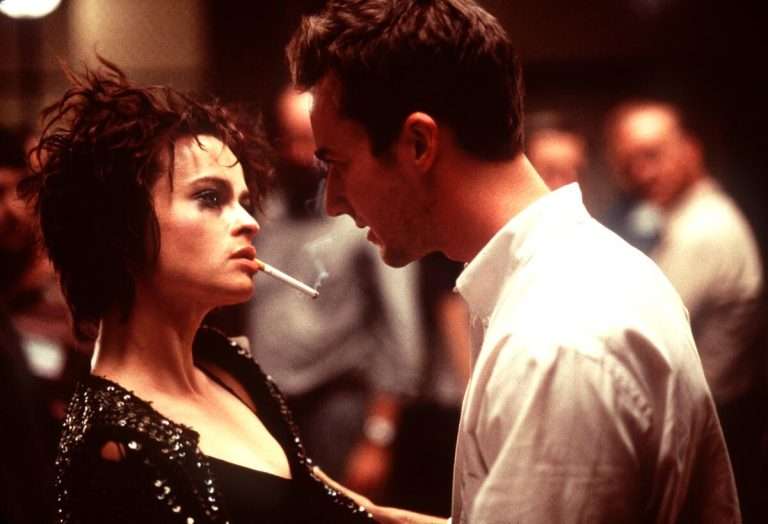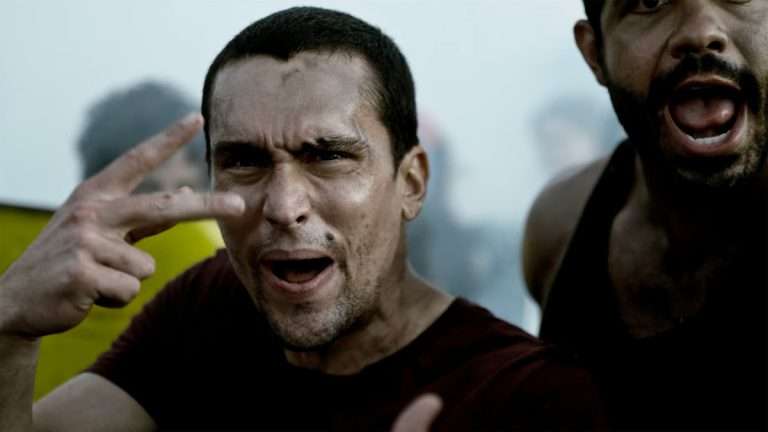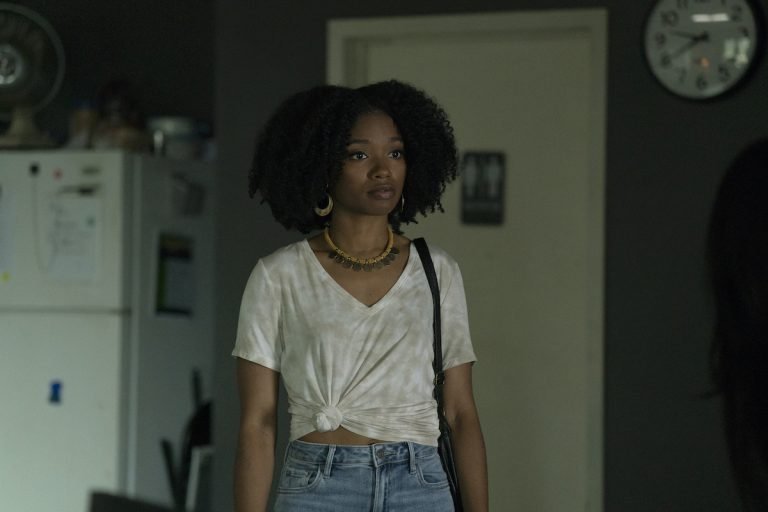Written and directed by Aislinn Clarke, “Frewaka” (2024) is a deeply unsettling folk horror drama that follows a grief-stricken woman who resumes her nursing career duties shortly after her mother’s death. Clarke’s film uses its atmospheric elements, be it the musical score, sound, or camerawork, to reveal many layers of the character’s quiet anguish rooted in her past. So, it is titled aptly, with a phonetic spelling for Fréamhach, an Irish word for ‘roots,’ which, in this film’s context, symbolically refers to familial and cultural roots. The film focuses on the constant push-and-pull that the protagonist feels with the past she has left behind or hopes to leave behind for good. Yet, it creeps up on her in one way or the other.
Spoilers Ahead
Frewaka (2024) Plot Summary & Movie Synopsis:
“Frewaka” is an Irish horror film predominantly unfolding in the Irish language. Clare Monnelly stars in the central role of Siobhan, along with Bríd Ní Neachtain as Peig, the old woman Siobhan agrees to care for.
What happens in Aislinn Clarke’s ‘Frewaka’?
Before diving into the heart of its narrative, the film shows two scenes without necessarily clarifying how they connect to the latter events. In the beginning, we see a young woman, Peig (Grace Collender), at a wedding in 1973, crashed by a group of people in straw hats. Unlike Peig, her partner is not concerned that this group has suddenly appeared there. While everyone else enjoys their raucous celebration, Peig seems disinterested. She walks out to catch her breath. There, she happens to see a goat. Moments later, Peig vanishes, leaving her partner and their engagement ring behind. The next scene takes place in the present, where a middle-aged woman (Tara Breathnach) strangles herself to death.
Soon, her daughter Siobhan / Shoo (Clare Monnelly) comes to check on her apartment along with her pregnant partner, Mila (Aleksandra Bystrzhitskaya). Unlike Mila, Siobhan dispassionately looks around all the religious paraphernalia, but is suddenly taken aback after seeing a beaming red cross. The same night, Siobhan receives a work assignment as a nursing palliative carer to help a woman in a small Irish town. She immediately accepts the offer without processing the emotional weight of her mother’s passing. Although it feels odd to her, Mila supports Siobhan’s decision. While on her way, Siobhan looks at the woman’s medical record and notices that she has recovered from a stroke and has mobility issues.
The Empathy and Apathy
Siobhan reaches the town and asks for directions to the house. However, the locals are barely supportive. They assume she doesn’t speak Irish and refuse to help her get there. Some also hint that she shouldn’t go there. Still, she locates it, realizing that the woman, Peig (Bríd Ní Neachtain), is on the edge and reluctant to let anyone be with her. Siobhan gleans from the notes to realize the details she missed before: Peig has frequent bouts of delusions and paranoia. So, she respects Peig’s wishes even if they don’t make sense. After Peig falls asleep, Siobhan takes a bath and opens the curtain over a mirror that Peig had earlier insisted she shouldn’t. Suddenly, she hears Peig groaning.
Peig says that she is afraid of ‘them’, who are always listening and staying in a house under hers. That night, Siobhan sleeps on a chair beside Peig. Later, she glances over at a red door with a horseshoe magnet that connects to a basement. However, she neither touches nor opens it. The next night, she has a nightmare where she sees her deceased mother in a casket breaking into a smile, followed by Mila crying in pain. Peig realizes that Siobhan is facing the horrors that she has faced for several years. She opens up about her past when she was pulled away from her wedding with Dáithí by ‘them.’ Peig says that they are the reason she has many scars on her back.
Siobhan also opens up about her past—how her mother locked her in a cupboard, forcing her to say prayers over and over, or else she’d get burns on her arm. That strained their relationship, which is why she was dispassionate about seeing her mother. However, relieving her emotional pain helps her connect with Peig.
Frewaka (2024) Movie Ending Explained:
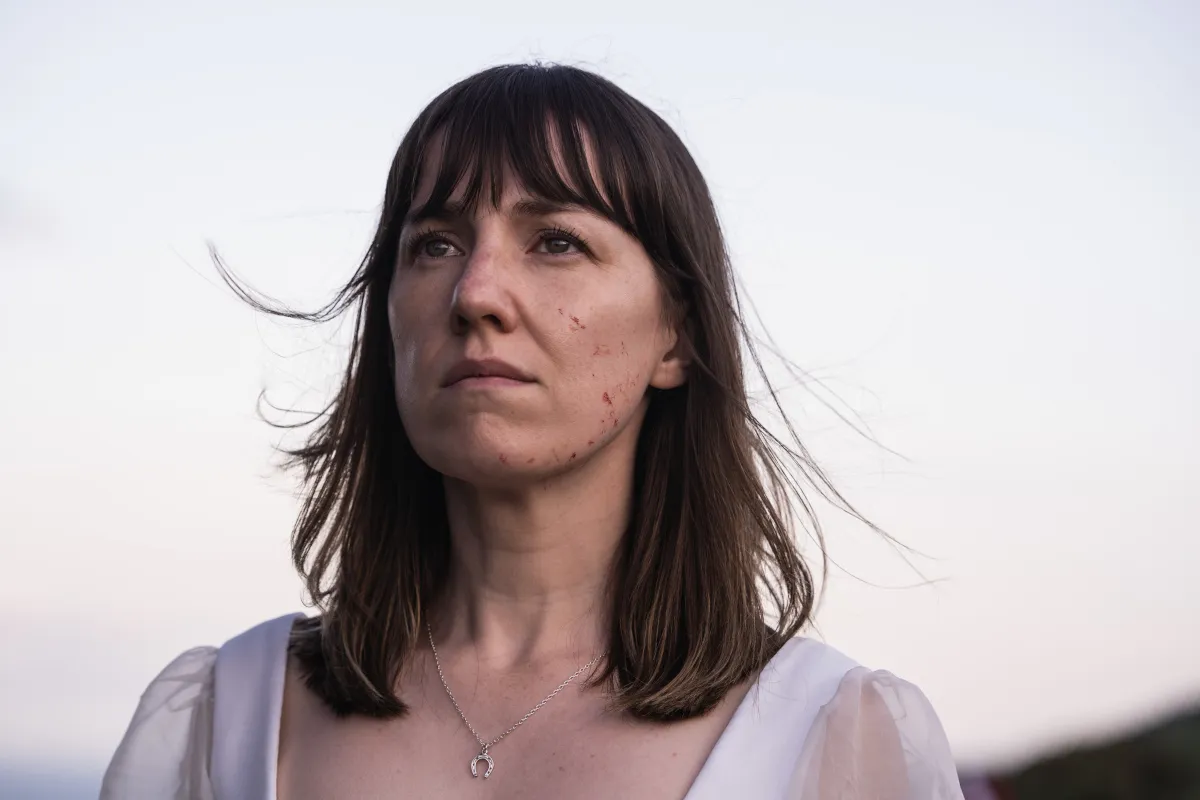
Unbeknownst to Peig, Siobhan walks into the underground bunker behind the red door and gets mysteriously locked inside. As she struggles to open it, she sees a woman in a stained wedding dress, identical to what her mother wore as she took her own life. Somehow, she manages to escape and looks back to find the woman has vanished. The next day, she receives a box with the same dress along with the rest of her mother’s belongings. Mila sent her this package, hoping it would help her process her emotions instead of keeping them bottled up. However, it irritates Siobhan, who’s already on edge because of all she witnessed in the town and how it brings back her painful memories of living with her mother.
Siobhan takes some of Peig’s medications, hoping to resolve the delusions she has been facing. However, it puts her job at risk. On the other hand, Peig wants her to leave immediately since she opened the red door despite Peig’s warnings against it. While Siobhan goes out in the town, Peig happens to notice a document that reveals a shocking detail about their relationship: Peig is Siobhan’s grandmother. She had to let go of her daughter (Siobhan’s mother), hoping that would protect her from ‘them’ who’ve been haunting her for decades. However, they now seek Siobhan as the next woman in the bloodline.
How are Siobhan and Peig connected?
Due to the passing down of all the generational trauma, Siobhan feels the paranoia that Peig has felt. She starts experiencing it during her stay in the town, whether that’s in the form of a goat or men with medieval-looking straw hats hunting her, similar to what Peig experienced. This is also why a news clipping of Peig’s disappearance from her wedding reminds her of her absence in her mother’s life, and upon her death. In the film’s final moments, the past and the present of Peig and Siobhan seemingly coalesce in the underground space where Peig is shown to have taken her life.
Siobhan hears Mila’s voice, offering help, but doesn’t find her outside the door. Still, she sees Mila’s car parked outside, which makes her believe that Mila has been taken by the forces behind the door. She notices a white wedding dress and a ring (identical to the one young Peig removed outside her wedding venue) and walks through the space. It leads her to a small hill with a masked woman, who crowns her. She sees a horned and bearded man standing over a hill. Suddenly, her eyes start bleeding. This visceral final shot shows her going through the trauma of her past generations since she is forced into taking a sacrificial step like Peig.
Frewaka (2024) Movie Themes Analyzed:
Grief, Generational Trauma, Folklore, and the Treatment of Women in Ireland
Grief and generational trauma are the central themes in “Frewaka,” which portrays the result of unprocessed emotions and unresolved qualms, creeping up when you least expect them. Even though Siobhan tries to distance herself from grief, she gets pulled back in the way other women have been for many generations. It ties in with a conversation Peig has with Siobhan about the burden women carry as opposed to men. All these events loosely tie into the trauma that Irish people have suffered, whether through the famines or the Magdalene laundries in Ireland.
Last year, “Small Things Like These” explored it through Cillian Murphy’s quietly disconcerted observer-character, while “The Woman in the Wall” explored it through an investigative mystery thriller into the past of its female Church-violence victims. “Frewaka” shows the unshakable effect of similar trauma on women through the eyes of Peig and Siobhan, who are part of this cycle.
The folklore represents the stories people share to make sense of the world they live in. Much like any other folklore, there are no rules or rigid structures to the tales used in the film. They are passed down from generation to generation, often orally. So, they are prone to change and reinterpretation along the way. At times, they were used to evoke certain emotions, whether fear, love, or discipline. That’s why the film uses the characters from folklore for a representational purpose more than a literal one. So, the ghosts from their past are not just their own making.



![Andhadhun Netflix [2018] Review: An Ace Thriller from Sriram Raghavan’s Stable](https://79468c92.delivery.rocketcdn.me/wp-content/uploads/2019/08/Andhadhun-featured-768x432.jpg)
